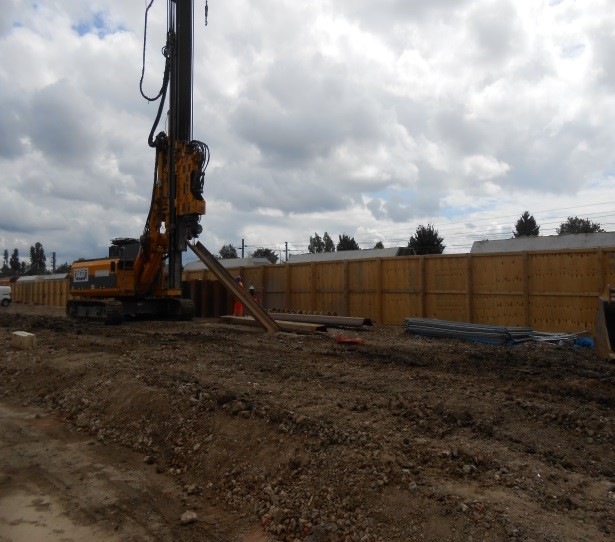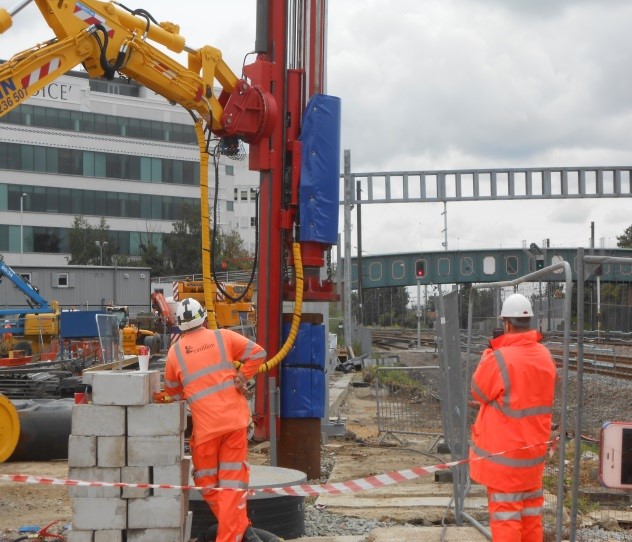Network Rail flyover gets BREEAM Infrastructure rating of Excellent
Overview
Stockley flyover was a £90 million Crossrail project. For the construction phase of the project, Network Rail, Carillion and Jacobs were responsible for the design, development and delivery of the flyover. All parties were keen to implement BREEAM Infrastructure (formerly known as CEEQUAL) standards and were successful in achieving a final verification rating of ‘Excellent’.
About
Network Rail is the owner and infrastructure manager of most of the railway network in Great Britain. It’s part of the Department for Transport, which reinvests its income in the railways.
Background
The objective of this civil engineering project was to construct a new flyover to facilitate Crossrail and Heathrow Express services between London and Heathrow Airport. It was constructed to allow trains to Reading and beyond to pass through the junction unhindered.

Challenges
One of the key challenges on the project was the potential impact of noise nuisance to residential and commercial neighbours. Network Rail and Carillion worked collaboratively with the contractor to ensure compliance working under a section 61 consent.
Many best practice techniques were established from the outset of the project in order to ensure minimum disturbance to the residential and commercial neighbours.
Solutions
Reducing noise
These best practice measures included:
Accurate recording, monitoring and investigation of complaints by both Network Rail and Carillion Environment Managers
Great communication and working relationships developed with the local authority and project acoustician, where regular update meetings were setup to review consent application, reviewing site progress and monitored data on the project
Shrouding and hoarding set up around piling rigs to mitigate noise impact on neighbouring properties
Regular training undertaken by Carillion project staff to discuss the best, practicable, means of reducing noise onsite during construction works
Identifying high noise generating equipment and procuring less noise producing equipment to reduce levels onsite.
As a result of these measures being implemented the project has been very successful in reducing the number of complaints from commercial and residential neighbours relating to construction noise.
Protecting biodiversity
A major aspect of the early works was to fully assess and then translocate wildlife to suitable receptor sites. The translocation programme resulted in 46 slow worms, 593 smooth newts and 599 fish being moved to suitable nearby receptor sites. In addition, 30 wild orchids were relocated to a similar habitat in north London at the Maple Lodge Nature Reserve courtesy of the Maple Lodge Conservation Society.
Carbon footprint
During the lifecycle of the project, Carillion set out to limit the carbon footprint of the project by reducing the amount of energy used in construction of the flyover, welfare onsite and support activities. Carillion implemented a carbon reduction plan on the project which set out specific controls such as:
Arrangements with approved suppliers to provide up to date energy efficient machinery and equiptment;
Mains electricity to be utilised as a primary source of energy for welfare and static equipment onsite;
Mobile site task lighting provided by ‘smart’ battery replenishing generators sets;
Lighting for access and in accommodation were fitted with PAR sensors;
Implementing site rules to require engines to be shut off when not in use.
Benefits
The project is also going beyond protecting wildlife from harm through translocation by implementing a biodiversity target of ‘No Net Loss’. This target was agreed by the directors and indicates the high level of support and importance environmental management and biodiversity carries on the programme. For Stockley flyover the ‘No Net Loss’ target meant the creation of new compensatory ponds at a nearby sites along with planting of native species.
A green travel plan was also implemented onsite to minimise energy use from site operatives travelling to and from the site. This promoted ways to encourage staff to use a range of sustainable or less environmentally damaging transport modes, with the emphasis being on reducing singular user private car travel.

